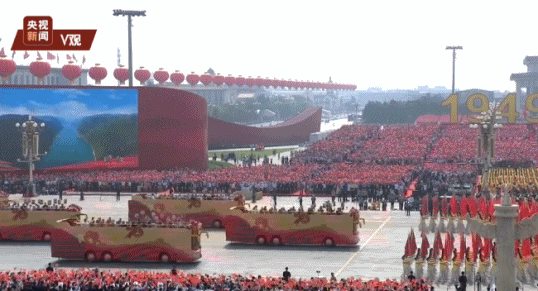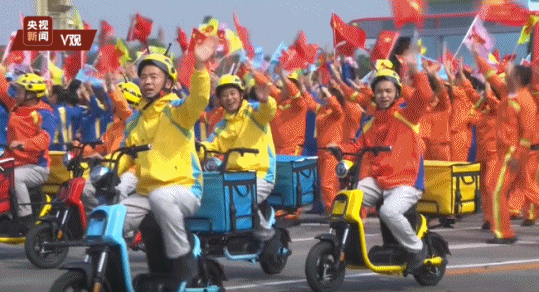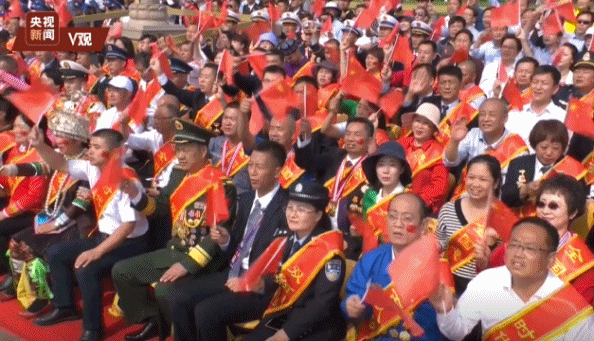On March 1st, 1957, the inaugural meeting of China Academy of Agricultural Sciences was held in Beijing. From then on, New China has its own "national team" in agricultural science and technology.
On May 27th, at the 60th anniversary commendation meeting of China Academy of Agricultural Sciences, Tang Huajun, academician of China Academy of Engineering and president of China Academy of Agricultural Sciences, delivered a forceful speech: China Academy of Agricultural Sciences "has gradually built into a national agricultural research institution with the largest scale, the most comprehensive disciplines, the strongest comprehensive research strength and important influence in the world".
Over the past 60 years, from solving the problem of food and clothing for Chinese people to eliminating poverty and hunger for the whole world, from tracking scientific and technological innovation to leading the world in many fields, China Academy of Agricultural Sciences has undertaken the glorious mission of China’s national team of agricultural scientific and technological innovation, the vanguard of reform and the decision-making think tank, and has written magnificent poems on the earth.
Concentrate on breeding and "stabilize" Chinese’s rice bowl
Turning over the agricultural history of the Republic, China Academy of Agricultural Sciences is active in every historical image that shines in the history.
In 1950s, the problem of eating was a national priority. As soon as the Academy was established, the researchers of China Academy of Agricultural Sciences embarked on a long and arduous road of breeding. In 1972, China Academy of Agricultural Sciences and Hunan Academy of Agricultural Sciences took the lead in developing the scientific research cooperation of indica hybrid rice, and successfully broke through the three-line matching of indica hybrid rice, making China the first country in the world to make use of hybrid advantages in rice production. In 1976, indica hybrid rice was popularized and applied in a large area in China, and the yield per unit area increased by 20%~50%, and the annual popularization area reached hundreds of millions of mu. At the same time, it was widely planted in the main rice producing areas in the world.
The advent of indica hybrid rice has established confidence for Chinese to hold on to his rice bowl. In the following decades, the research on super rice in China and global green super rice, which was hosted by China Academy of Agricultural Sciences, made new breakthroughs, and new varieties set new records for rice yield in China again and again. At present, the annual promotion area is over 100 million mu, accounting for 1/4 of the national rice area.
Also as an important food crop, since 1950s, experts from China Academy of Agricultural Sciences, represented by Zhuang Qiaosheng and Academician Dong Yuchen, have made China at the international first-class level in wheat breeding and other fields through decades of efforts. In 1980s, China Academy of Agricultural Sciences, based on the research and utilization of Taigu genic male sterile wheat, a unique genetic resource in China, initiated the efficient breeding technology system of dwarf abortive wheat, and successively bred more than 60 new wheat varieties, with a cumulative popularization of about 230 million mu.
Today, China Academy of Agricultural Sciences has the second largest national germplasm resource bank in the world, and more than 480,000 agricultural germplasm resources are neatly displayed in rows of iron cabinets. "Germplasm resources are the source of variety innovation, which have become our strategic resources to ensure food security and support the sustainable development of agriculture." Wan Jianmin, academician of China Academy of Engineering and vice president of China Academy of Agricultural Sciences, said.
Aim at the frontier and lead the international agricultural research.
As the "national team" of scientific research, China Academy of Agricultural Sciences represents face of china on the international stage of agricultural science and technology competition. A series of basic, strategic and forward-looking agricultural innovation achievements have attracted worldwide attention.
In 2004, bird flu was rampant all over the world. Facing the emergency situation, experts from Harbin Veterinary Research Institute of China Academy of Agricultural Sciences, represented by researcher Chen Hualan, developed the world’s first recombinant bivalent live vaccine of avian influenza and Newcastle disease by using a series of H5 avian influenza vaccines created since 1994, and put it into production, which successfully controlled the epidemic of the virus and blocked its spread to human beings. "Now our laboratory team is carrying out three tasks at the same time: epidemiology, basic biological research of viruses and vaccine research and development, with international leading research strength." Chen Hualan talked about this with confidence in his eyes.
Also leading the way is crop genomics research. Agricultural Genome Research Institute of China Academy of Agricultural Sciences, established in 2014, is the youngest research institute of China Academy of Agricultural Sciences, but it is a veritable leader in the eyes of international peers. According to statistics, at present, two-thirds of the global crop gene analysis is completed by Chinese, and half of them are completed by China Academy of Agricultural Sciences. From cucumber and potato to cabbage and rape, the research team led by China Academy of Agricultural Sciences took the lead in completing the whole genome sequencing of crops again and again in the world, revealing the genetic mystery.
At present, China Academy of Agricultural Sciences has 34 professional research institutes, 6 national key laboratories, 20 ministerial key laboratories, 13 national crop improvement centers and sub-centers, and the world’s largest somatic cell bank of livestock and poultry breeds, making it a well-deserved national agricultural science and technology innovation platform.
Open cooperation in strategic research for national development.
China Academy of Agricultural Sciences has always kept the needs of the country in mind. In 1984, the problem of "having enough food" in Chinese was basically solved, but "how much food does China need" is still an unresolved issue. Academician Lu Liangshu, then president of China Academy of Agricultural Sciences, organized a special research group on grain strategy. After calculation, they put forward the policy proposal that "400 kilograms of grain per capita is indispensable" to the central government. This data is still an important reference for the central agricultural decision-making.
Over the past 60 years, China Academy of Agricultural Sciences has successively presided over the completion of "Theoretical Road and Mode of Agricultural Modernization in China" and "Research on Agricultural Science and Technology System Reform in China", and put forward a series of important strategic ideas and policy suggestions, such as "Modern intensive and sustainable agriculture is the only way for agricultural development in China", "Planting industry should change from grain-economy dual structure to grain-economy-feed ternary structure" and "changing food safety concept into food safety concept", which have all become programmatic ideas and policy suggestions for building modern agriculture in China.
In 2007, the No.1 Document of the Central Committee formally put forward the agricultural "going out" as a national strategy, and it was many achievements and technologies of China Academy of Agricultural Sciences that were the first to go abroad. Using molecular breeding technology, Rice Institute of China Academy of Agricultural Sciences has cultivated the second generation of green super conventional rice and hybrid rice for Asian and African target countries, which generally increased the yield by 20%~30% compared with local varieties, with a total extension area of 2.1 million hectares.
By the end of 2016, China Academy of Agricultural Sciences had established extensive contacts and cooperation with agricultural research institutions and universities in 83 countries, 38 international organizations, 7 multinational companies and foundations. Wang Ren, Assistant Director-General of FAO, said: "China Academy of Agricultural Sciences has made unremitting efforts to solve food security, poverty eradication and sustainable development in China and the world."
Tang Huajun told reporters that at present, China Academy of Agricultural Sciences has formulated a medium-and long-term development plan and goal, and it is clear that by the end of the 13th Five-Year Plan, more than six world-class agricultural science centers and about 30 national agricultural science and technology centers will be built, and about 170 outstanding scientific and technological innovation teams will be built. He said: "60 years is a new starting point. We will overcome a number of major technical problems urgently needed for industrial development, strive to achieve the goal of world-class agricultural research institutes at an early date, and make new and greater contributions to promoting the structural reform of agricultural supply side and the development of modern agriculture!"
(Beijing, May 27 th, by reporter Yang Shu)






